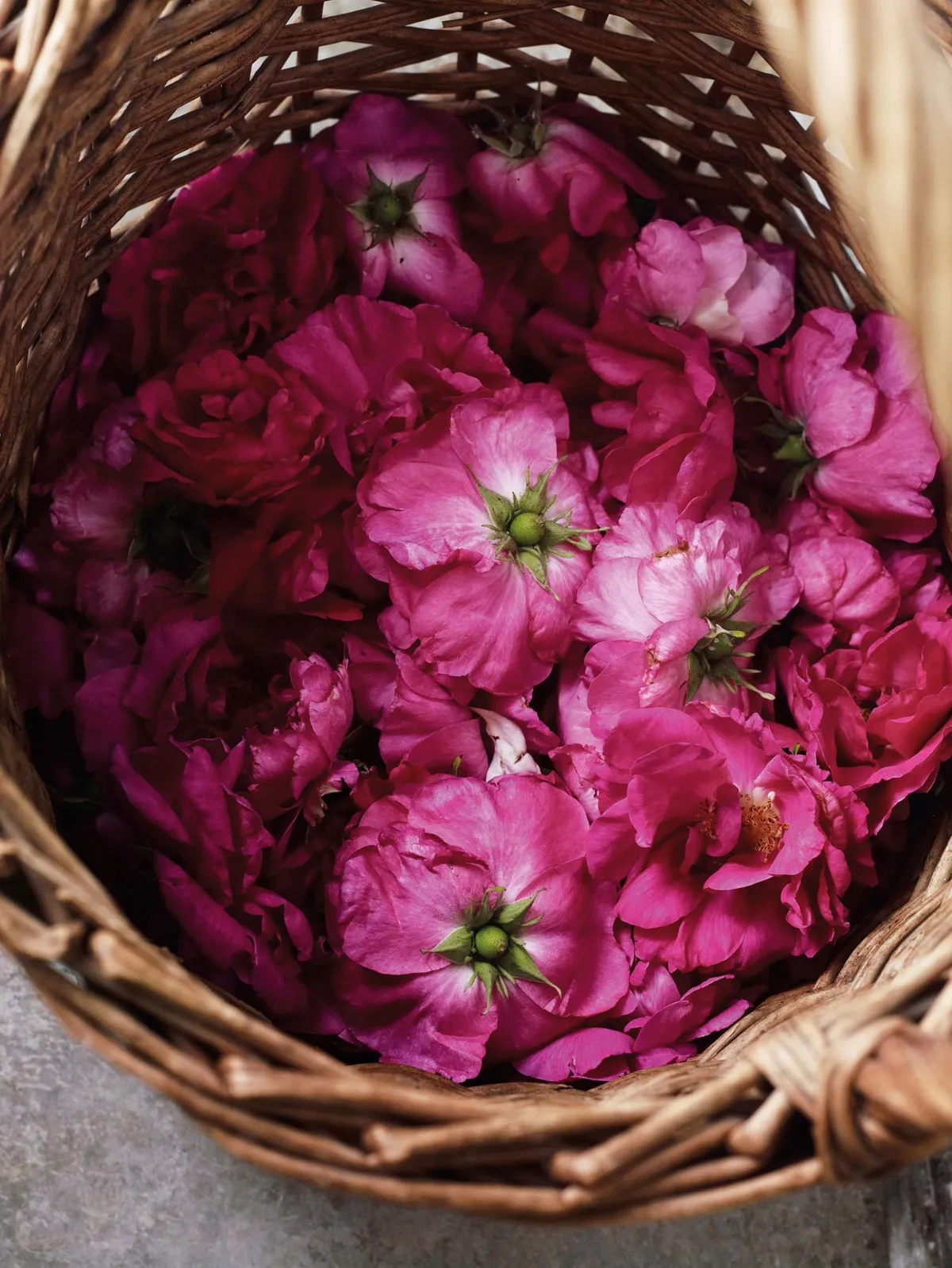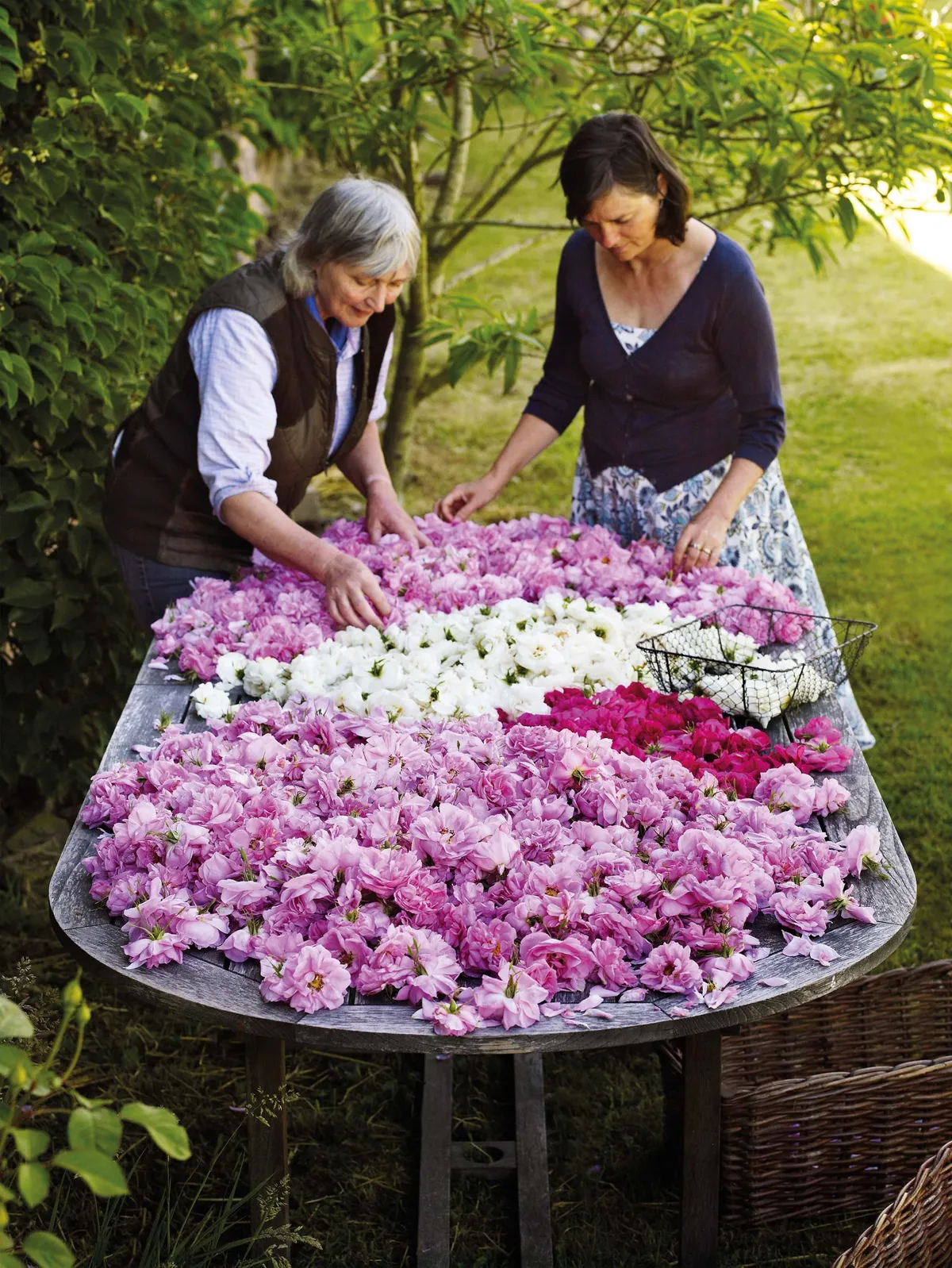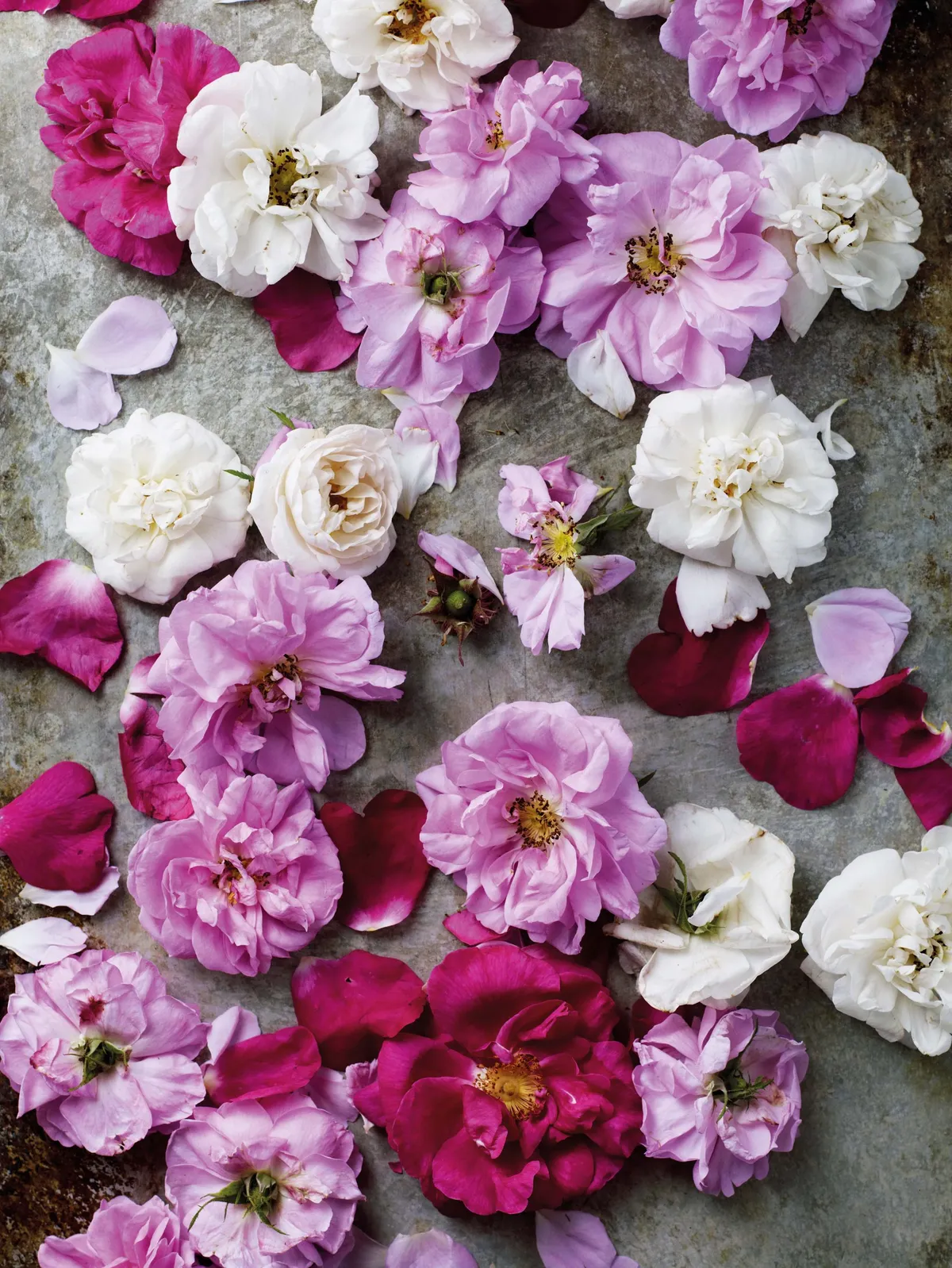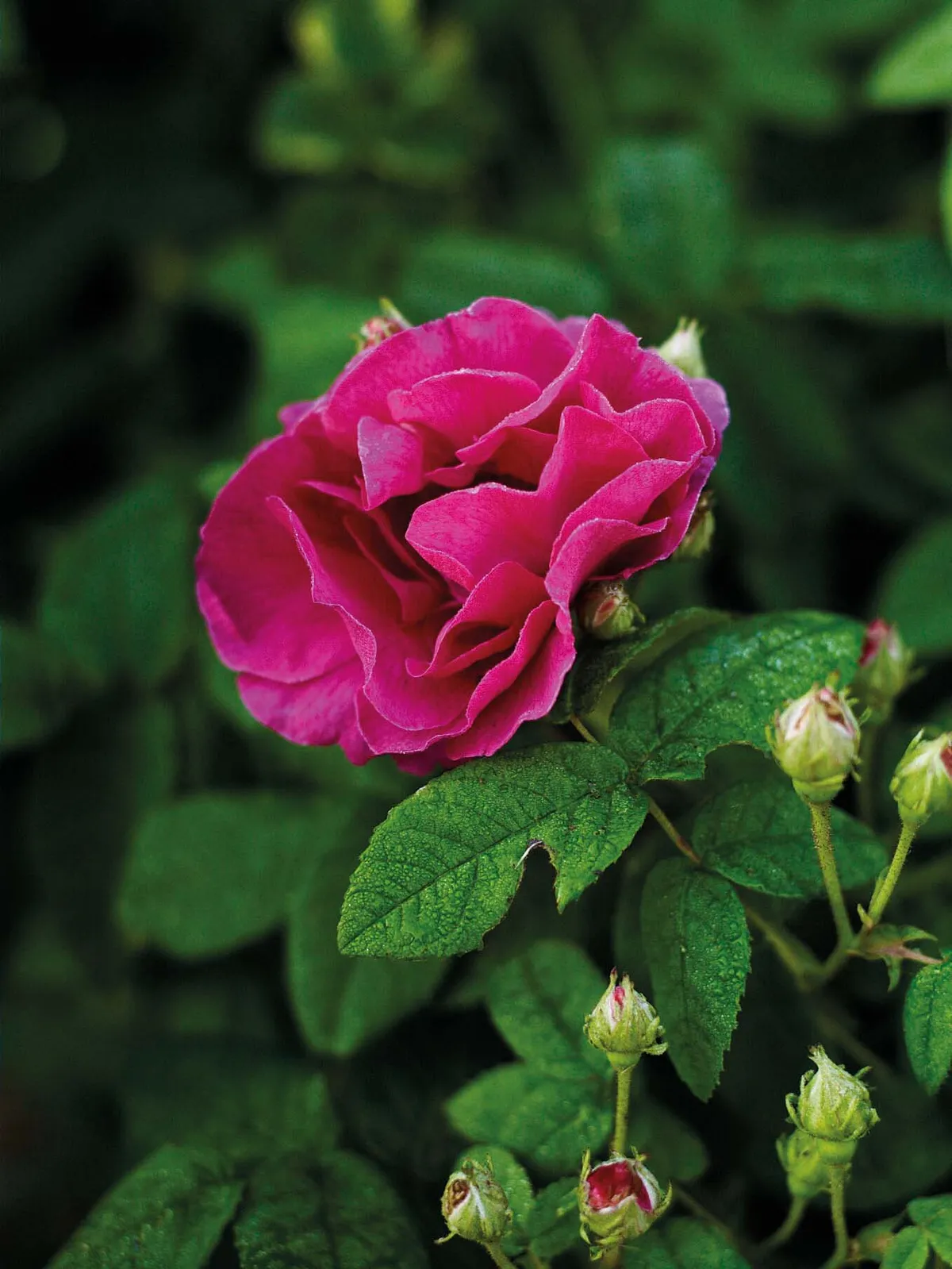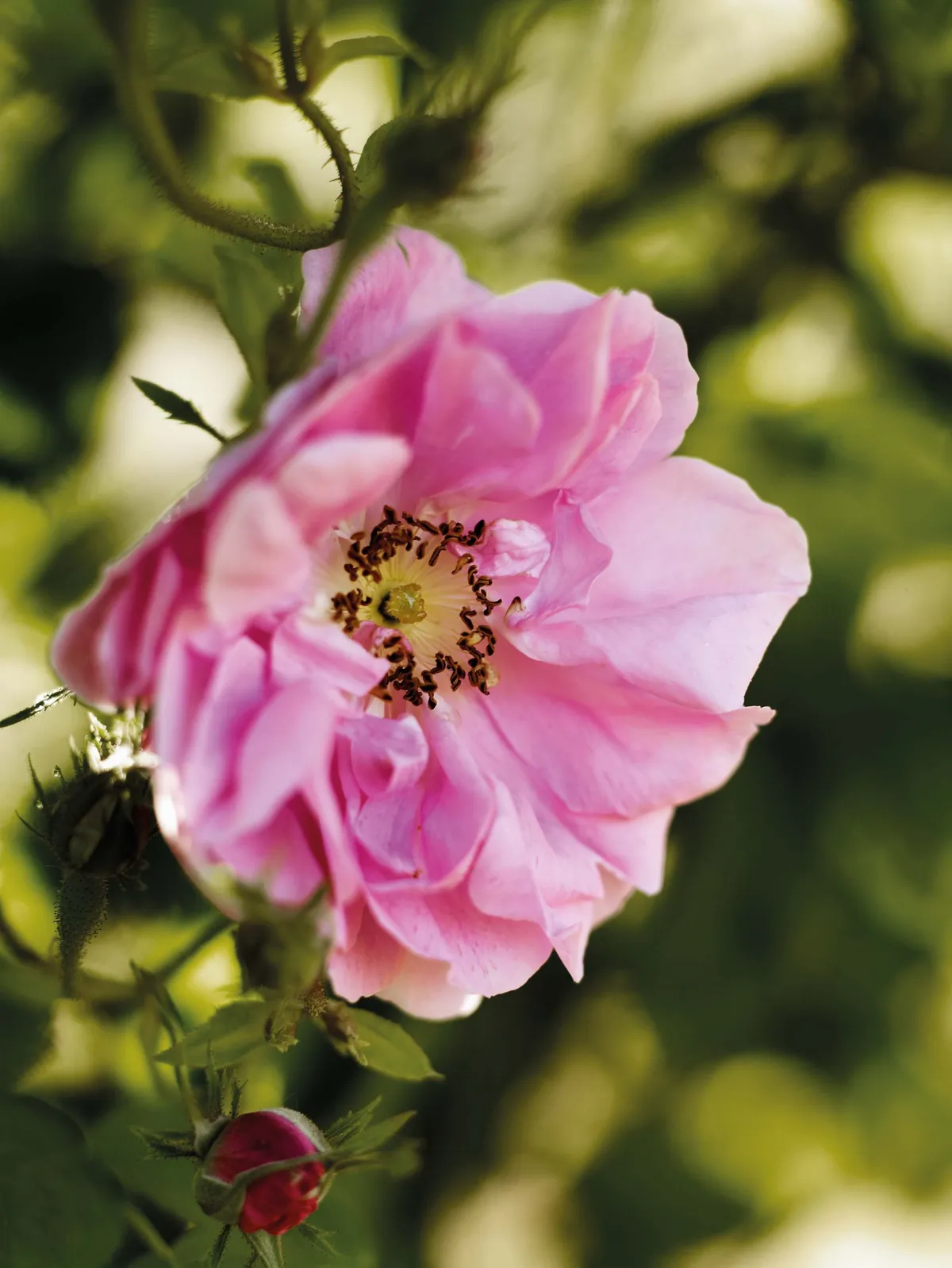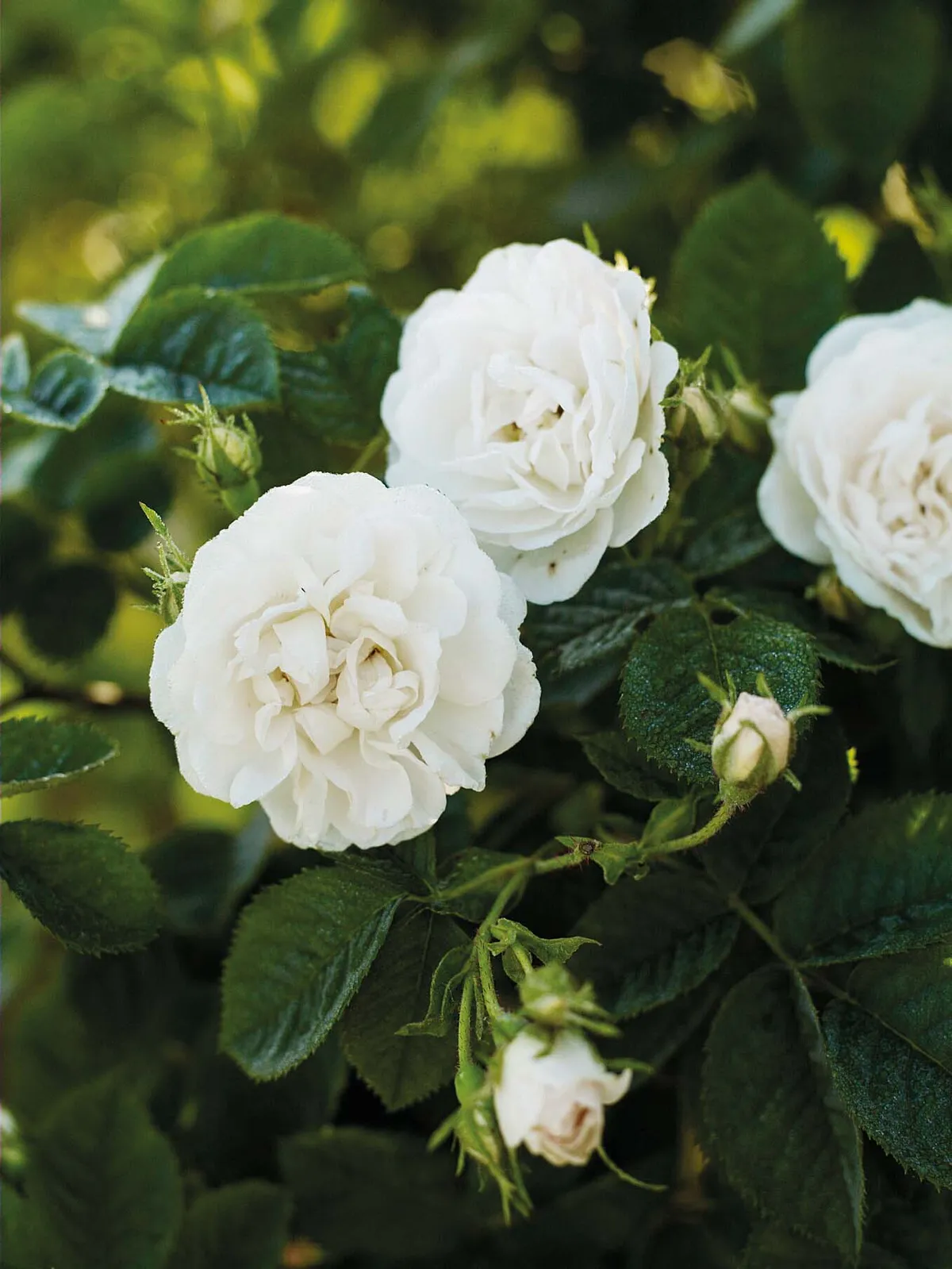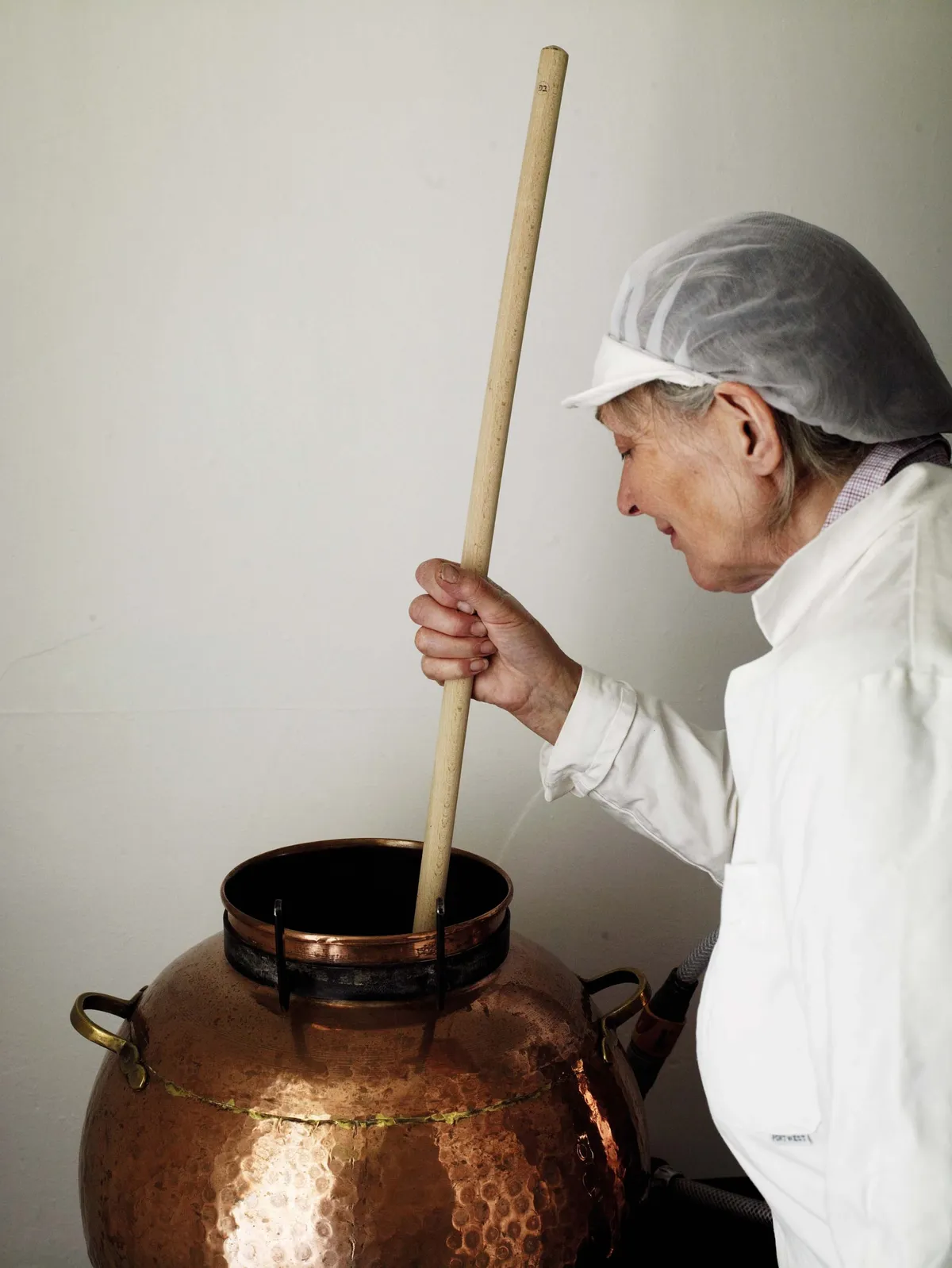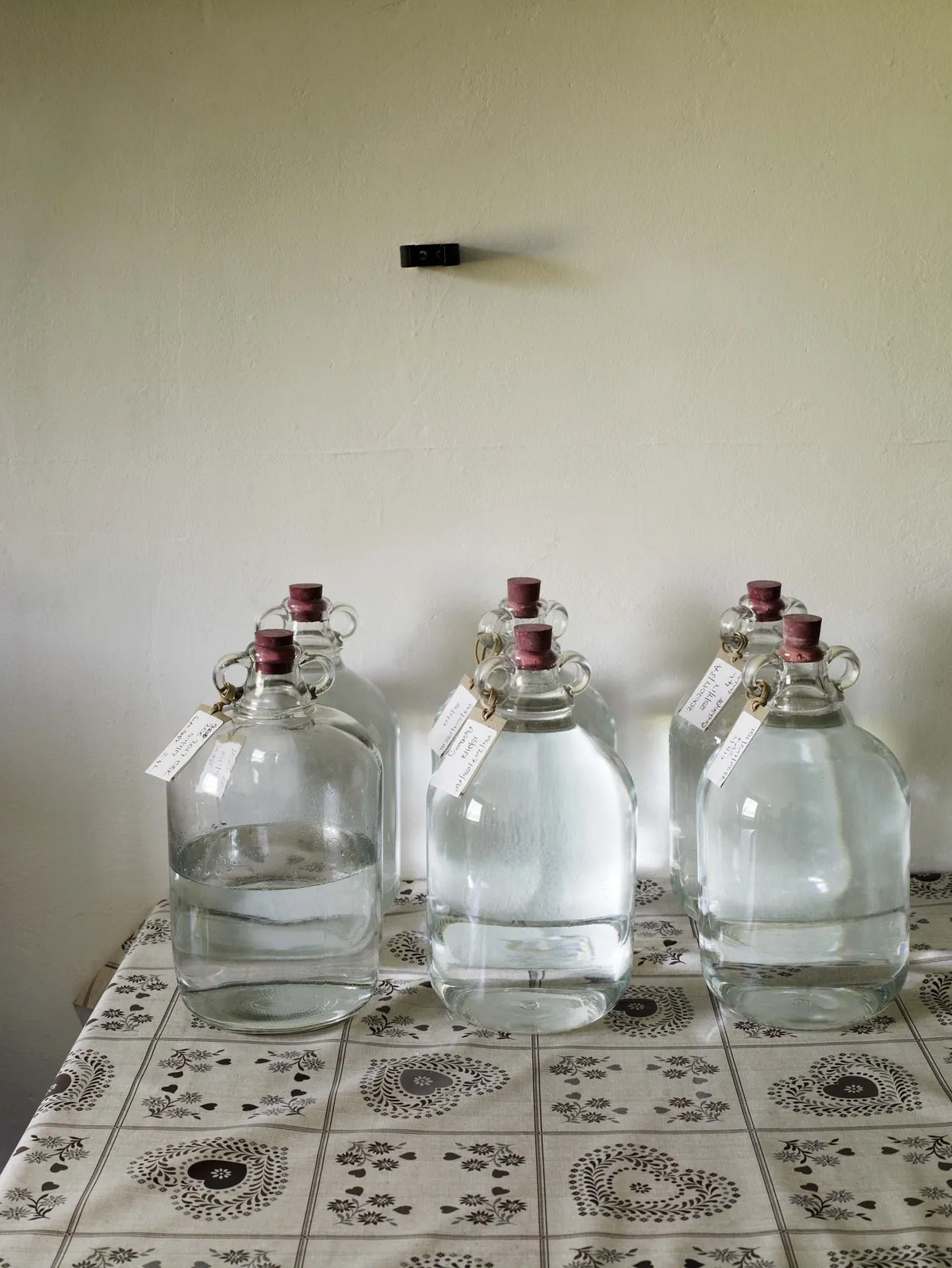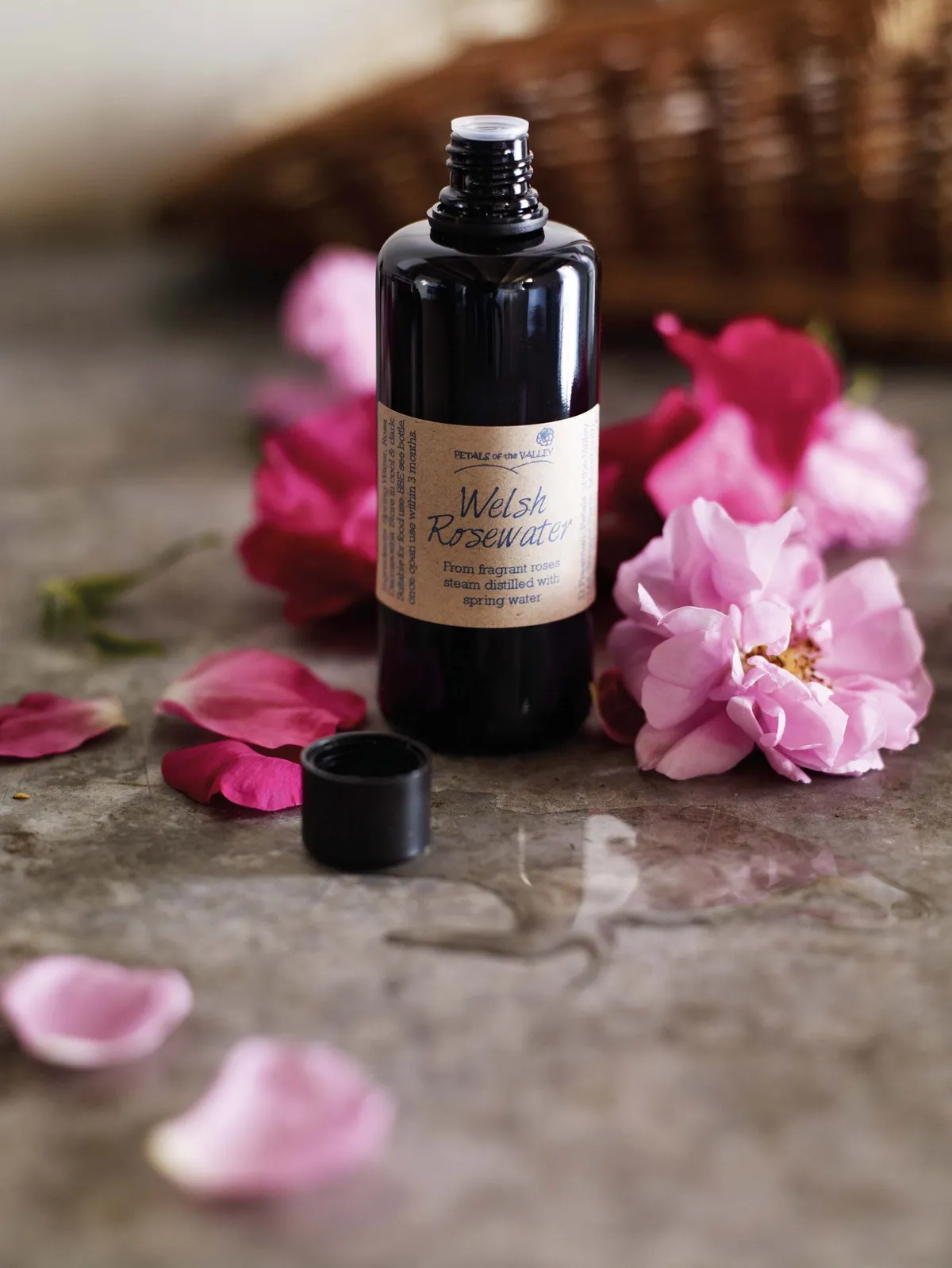On a sloping site in the breathtakingly beautiful Monnow Valley in Monmouthshire, friends Desdemona Freeman and Denise Jones are creating something unique: an artisan rosewater rich in essential oils. Unlike most commercially produced rosewater, theirs isn’t a by-product of making rose oil – a process whereby the oil is separated out during distillation and the petals are distilled multiple times to squeeze out every last drop. Everything that goes into Desdemona and Denise’s copper still remains throughout the distillation process to retain all the goodness and fragrance of the roses they grow. They are doing it the traditional way.
Making Welsh rosewater has been a big learning curve for both women. Neither had much experience of cultivating roses, before they started growing them behind Desdemona’s farmhouse in 2009; their company Petals of the Valley didn’t launch its first rosewater until 2014. It took time to research the distillation process, set up a still and put the rosewater through the rigorous testing it need to be approved for sale. “If we didn’t have so much passion for what we were doing, we would have given up,” admits Denise. “A steel core must run through both of us.”
The roses are grown in heavy clay soil. The Welsh weather provides plenty of rain and, thanks to the site’s sloping aspect, it has naturally good drainage. The roses are mulched with horse manure and although Petals of the Valley is not certified organic, the plants are grown according to organic principles. Pests are deterred with the help of companion planting and caterpillars are picked off and fed to the ducks.
The picking season from lasts six to eight weeks from May to late July, depending on the weather. There are no days off during this time. To ensure they harvest the flowers at their best, Desdemona and Denise pick the roses every day, starting at 5.30am so that they can harvest the flowerheads before the bees arrive and the sun burns off the essential oils. They choose the roses that have just burst open, the ones that are soft and still a little crumpled. After picking, the baskets of collected roses are left for a few hours to allow for any harbouring insects to escape. They are then bagged and stored in the freezer, as freezing breaks down the petals allowing more to fit in the still. By 8am when the gathering work is finished, the orders are ready to be packed.
Outside of picking times, the pair share the responsibility of distilling the rosewater. This is the most time-consuming part of the process, taking three to four hours from beginning to end. They start by filling the spherical, bottom half of the still with roses and fresh spring water. This is then heated by a gas burner underneath. Steam will gently rise up through the lid and travel through the copper tube, or swan neck, to the cylindrical condenser filled with cold spring water, where it will condensate into a liquid. This is the rosewater, which is collected in a glass demijohn. Throughout the process whoever is on distilling duty needs to be aware of the water going in and the water coming out, and carefully watch the condensing coil and listen to the still to make sure it sounds right.
Petals of the Valley uses three different roses in its range of rosewaters: Rosa gallica var. officinalis the traditional apothecary rose, which is dark pink in colour, wildly fragrant and the most exotic of the three; Rosa x alba ‘Alba Maxima’, a white rose, with a gentle, lemon-like fragrance, for those who prefer a lighter rose scent; and Rosa x damascena ‘Kazanlik’, a pale-pink rose that takes its name from a town in the Valley of Roses in Bulgaria where much of the world’s rose oil is produced. It has the strongest fragrance of the three and is ideal for use in cooking.
These three roses are used to produce the Petals of the Valley range of rosewaters, and all are available as 30ml or 100ml bottles. The company also produces two room and pillow sprays: one that combines the white and apothecary rose, and another that has had a small amount of lavender added into it. Because they make the rosewater in such a natural way, it isn’t a heavy scent that hangs around, as Denise says: “You spray it, engage with it and then it’s gone.” The whole process is very eco-conscious. Solar panels generate electricity to power the freezer, the slush left from the distilling process is composted, and the rosewater bottles are recyclable.
They sell all over the world, to customers who love the high oil content in their rosewater. Many use it for cooking – Desdemona uses rosewater to flavour her Welsh cakes – but a large proportion find it useful as a beauty product, combining the water with moisturiser or as an ointment for skin complaints. Both Denise and Desdemona agree that receiving happy comments from their customers is the best part of what they do. “Producing something that is so associated with love in real terms, it’s such a reward,” says Denise. “And that’s what it’s all about.”
Useful information Petals of the Valley, Tregout Farm, Crossway, nr Newcastle, Monmouth NP25 5NS. Tel 01600 750294, petalsofthevalley.co.uk
Making rosewater step by step

Roses are gathered early in the morning before the sun burns off the essential oils.

Denise (left) and Desdemona spread out the flowerheads to allow for harbouring insects to escape before the roses are packed away and stored in the freezer.

Denise stirs the roses and water.
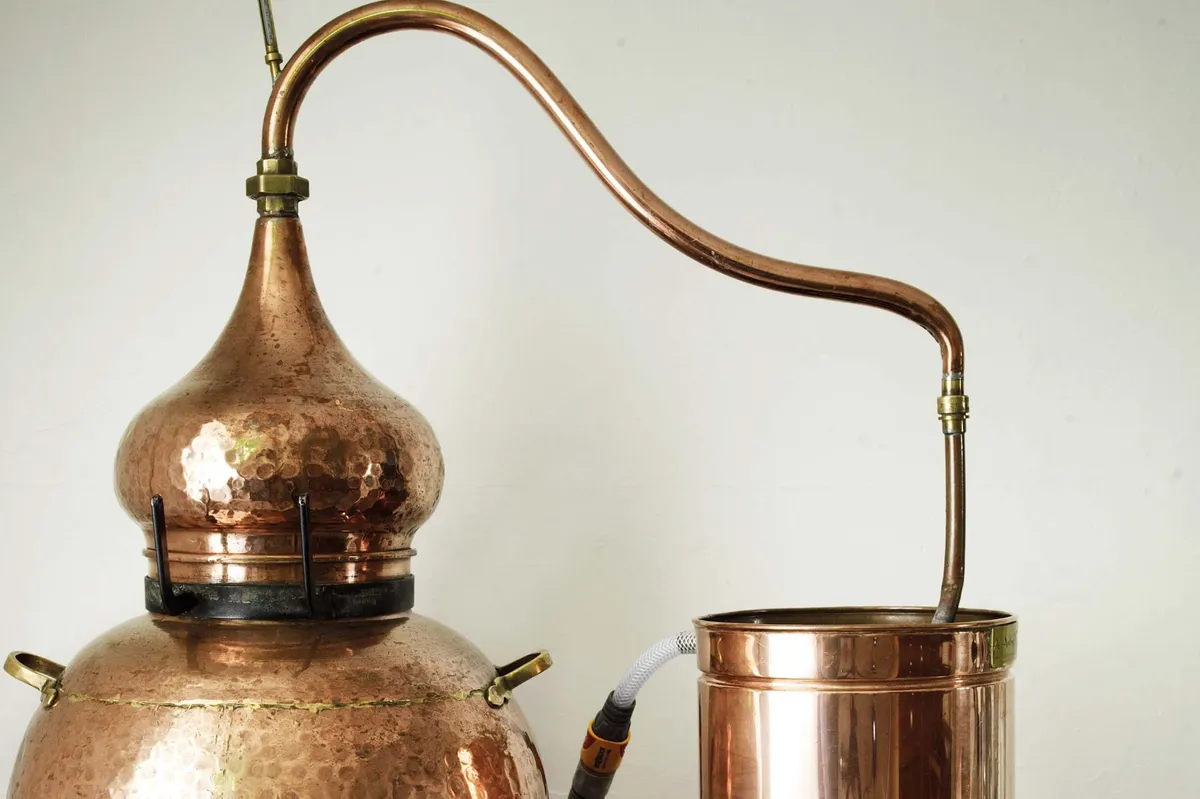
The steam from this process is then cooled and condensed in the cylinder vessel on the right and collected in demijohns as rosewater.
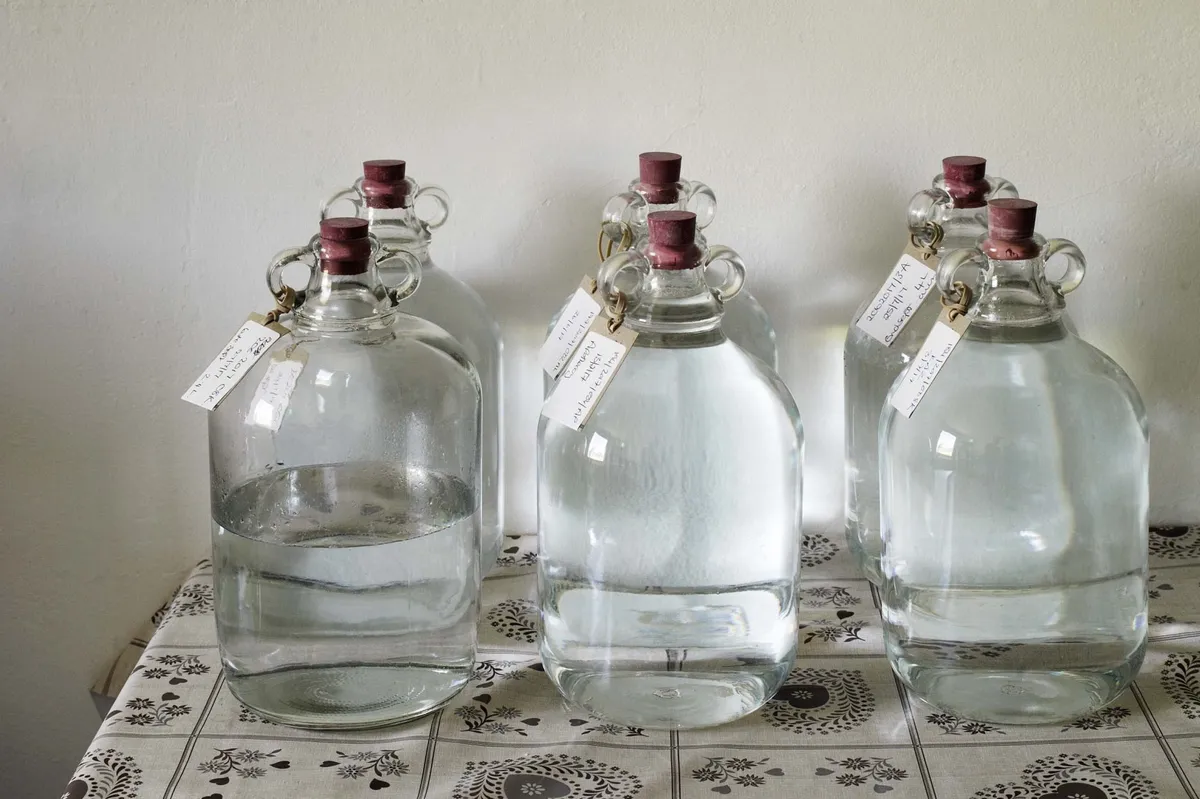
After distillation, the rosewater is left to mature in a cool, dark barn before being bottled up.
